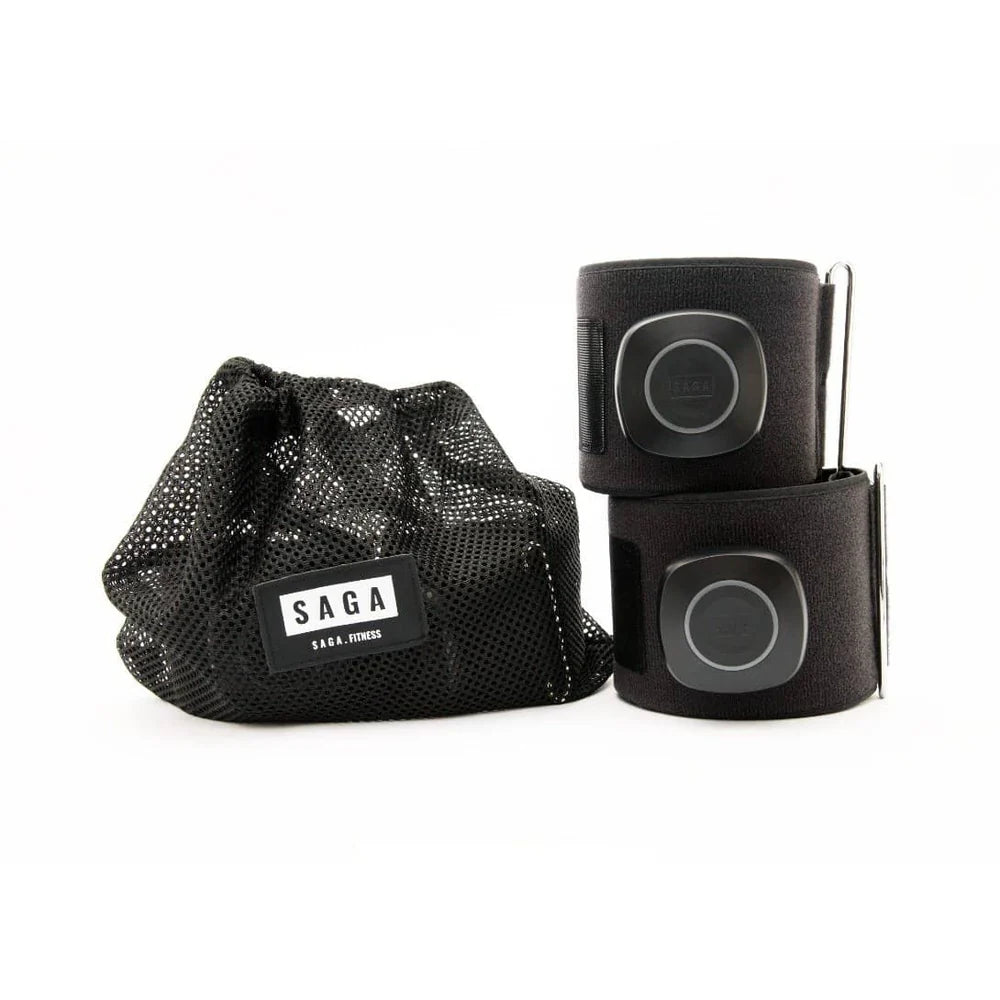Blood Flow Restriction (BFR) training is rapidly gaining traction in the fitness world for its ability to enhance muscle growth using lower intensity workouts. This technique, which involves the use of BFR bands to partially restrict blood flow to the muscles, promises significant gains without the traditional heavy lifting. However, concerns about the safety of these bands, specifically regarding the risk of blood clots, have prompted a detailed examination of their use. In this article, we'll explore can bfr bands cause blood clots, how BFR bands work, delve into their safety, and discuss the innovative BFR Cuffs by SAGA Fitness, designed to optimize this training method safely and effectively.
Can BFR Bands Cause Blood Clots?
can bfr bands cause blood clots? Blood flow restriction (BFR) bands, when used properly, are generally considered safe and do not typically cause blood clots. BFR training involves applying a cuff or band to the limbs while exercising, which partially restricts blood flow. This method is designed to reduce oxygen supply to the muscles, enhancing muscle growth and strength by accumulating metabolic stress.
However, it's important for individuals to use BFR bands under the guidance of a trained professional who can ensure that the bands are applied with the correct pressure. Incorrect use of BFR bands, such as overly tight application, could potentially increase the risk of circulation issues, including blood clots, especially in individuals who are already at risk for such conditions.
Therefore, individuals with a history of blood clotting disorders, vascular disease, or those who are pregnant, should consult a healthcare provider before starting BFR training. It’s crucial to adhere to recommended guidelines and professional advice to use BFR bands safely and effectively.
Understanding BFR Training
Understanding BFR Training involves grasping the principles behind Blood Flow Restriction (BFR) and its application in fitness and rehabilitation settings. BFR training employs the use of bands or cuffs to strategically reduce the blood flow to exercising muscles. The goal is to limit the amount of oxygen available to those muscles, creating a condition similar to that experienced during intense workouts. This method stimulates muscle growth and strength gains at much lower exercise intensities by accumulating metabolic byproducts that promote muscle hypertrophy. BFR is particularly useful for those recovering from injuries or those who are unable to perform high-intensity exercises due to various constraints. As this technique gains popularity, it's essential to understand how to safely implement BFR to maximize benefits while minimizing risks.
read more about: BFR PHYSIOLOGY
Safety Considerations
Research has shown that BFR training does not necessarily increase the risk of blood clots. In fact, some studies suggest that BFR may have protective effects against thromboembolic events. However, it is crucial to use BFR bands correctly to mitigate any potential risks.
When implementing Blood Flow Restriction (BFR) training, it's essential to consider several safety guidelines to ensure effective and secure workouts. Here are key safety considerations:
-
Proper Application: BFR cuffs or bands must be applied correctly. They should be tight enough to restrict venous flow but not so tight that they stop arterial inflow. Incorrect application can lead to discomfort, bruising, or more severe vascular complications.
-
Training Intensity and Duration: It's important to adjust the intensity and duration of exercises performed under BFR. Typically, exercises should be performed at 20-30% of one-rep max, and sessions should be relatively short to prevent undue stress on the muscles and circulatory system.
-
Monitoring: Continuous monitoring during BFR training sessions is crucial, especially for beginners or those with underlying health conditions. Monitoring helps in adjusting the pressure and duration to individual tolerance levels and ensures that the training does not exacerbate any pre-existing conditions.
-
Education: Users should be well-informed about the technique, potential risks, and the correct way to use BFR bands. Education can significantly reduce the risk of misuse and the potential for injury.
-
Consultation with Healthcare Providers: Individuals with a history of blood clots, vascular disease, high blood pressure, or other related health issues should consult healthcare providers before starting BFR training. This is crucial to avoid any adverse effects that could arise from restricted blood flow.
-
Hydration and Nutrition: Proper hydration and nutrition are vital, as BFR training can be physically demanding and may increase metabolic demands.
learn more about: Safety of BFR Training
Product Features
"The BFR Cuffs" by SAGA Fitness provide a convenient and effective way to incorporate BFR training into your workout routine. The cuffs come in pairs and include a USB-C dual charging cable, a mesh bag travel case, and care instructions for proper use.
Precautions and Recommendations
While BFR training can be safe and beneficial when used appropriately, individuals with certain health conditions, such as hypertension, cardiovascular disease, or a history of blood clots, should exercise caution. It is advisable to consult a healthcare professional before starting BFR training, especially if you fall into any high-risk categories.
Conclusion
In conclusion, BFR bands like "The BFR Cuffs" by SAGA Fitness offer a promising way to optimize workouts and achieve fitness goals. When used correctly and with proper guidance, the risk of blood clots associated with BFR training can be minimized, making it a valuable tool for muscle building and strength enhancement.

